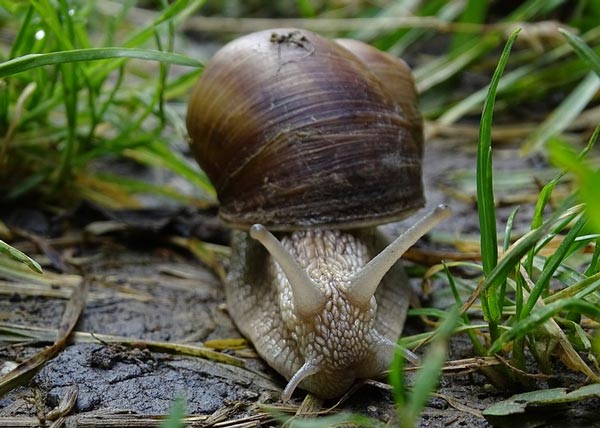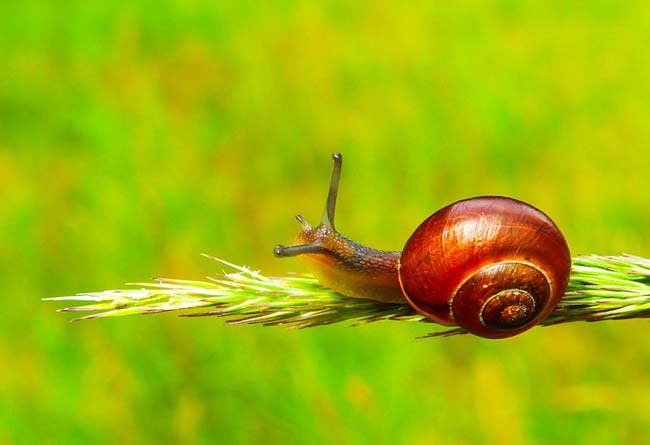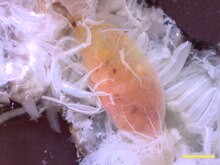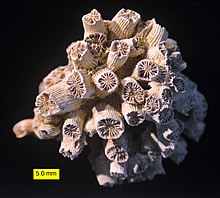Все представители животного мира делятся на две группы – беспозвоночные и позвоночные животные. Первая группа отличается своей многочисленностью и разнообразием. Представителей беспозвоночных животных можно встретить практически повсюду. Они способны жить в пресных водоёмах и морях, на суше в лесах и жарких пустынях, в почве и даже внутри тел других животных и в различных органах растений.
Что объединяет беспозвоночных?
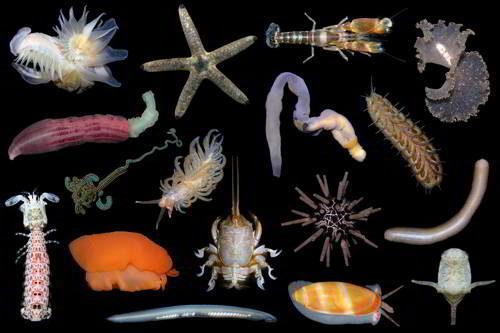
Очевидно, что беспозвоночными они названы по той простой причине, что у них отсутствует осевой орган – позвоночник. У них нет и скелета, тело их мягкое, но у большинства представителей оно имеет так называемый внешний скелет в виде твёрдого хитина или раковины. Это помогает им противостоять условиям внешней среды. Те же представители, которые не имеют этого приспособления, обычно являются паразитами и поселяются внутри других организмов. Или же они ведут малоподвижную жизнь в безопасных условиях. Кроме этого все беспозвоночные животные относятся к холоднокровным, то есть температура их тела напрямую зависит от температуры окружающей среды.
Основные типы беспозвоночных
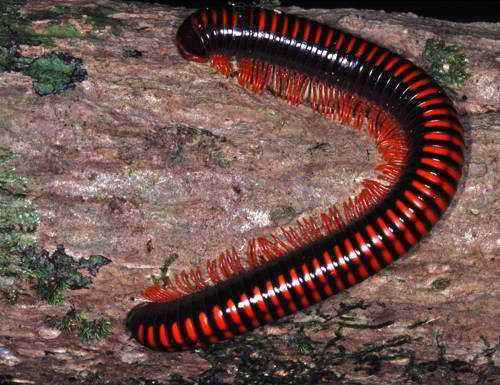
Почти 90% беспозвоночных относится к членистоногим. Среди членистоногих есть насекомые, пауки, многоножки и ракообразные. Насекомые – самая большая группа не только членистоногих, но и беспозвоночных в целом. Это – жуки, бабочки, мухи, комары, стрекозы, кузнечики, пчёлы, муравьи и многие другие. Все они имеют три пары ног, усики, а большинство – ещё и крылья. Среди них есть много полезных насекомых и очень много вредителей, которые уничтожают посевы и вредят лесным насаждениям.
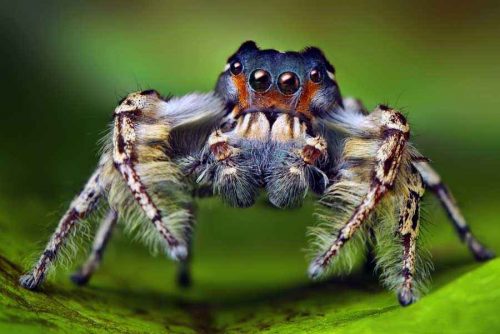
Менее разнообразная группа членистоногих – пауки. Они отличаются от насекомых наличием четырёх пар ног и отсутствием усиков. К группе пауков относятся такие паразиты, как клещи, а также ядовитые скорпионы. Также многие могли слышать о таких ядовитых пауках, как тарантул, каракурт, фаланга. Ну и третья группа – ракообразные. У них тоже есть усики и десять пар ног. Это омары, крабы, речные раки. Все они проживают в водоёмах. Тело всех членистоногих покрыто твёрдой хитинизированной кутикулой, которая защищает их от неблагоприятных условий.
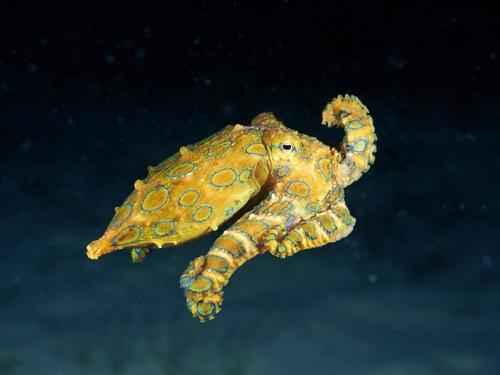
На другом месте по многообразию среди беспозвоночных находится такая группа животных, как моллюски. Они встречаются как на суше, так и в водоёмах. Тело их мягкое и у большинства представителей спрятано в раковину. Это – виноградные улитки, слизни, беззубки, мидии, устрицы, а также такие морские великаны, как кальмары, осьминоги, каракатицы. Этим крупным моллюскам раковина не нужна, они имеют огромные щупальца, которыми могут защищаться от врагов и добывать себе пищу.
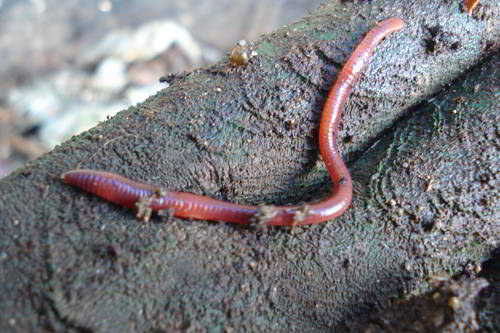
Ещё одна группа беспозвоночных – это черви. Они имеют вытянутое тело, круглое или плоское. Среди червей есть свободноживущие морские, а также живущие в земле. Например, всем известный дождевой червяк. Но большая группа червей относится к паразитам человека и животных. Они поселяются в печени, кишечнике, мышцах и других органах, принося своим хозяевам существенный вред. Зачастую всех паразитов называют одним словом – глисты.
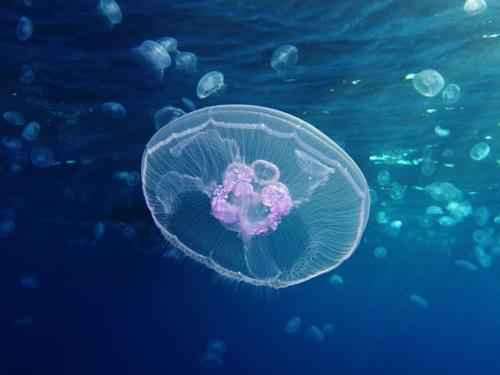
Самой простой группой беспозвоночных являются кишечнополостные. Тело их не имеет специальных органов и состоит из двух слоёв клеток. А эти клетки выполняют различные функции. Одна группа клеток отвечает за перемещение, другая за питание, третья за размножение, есть клетки, которые воспринимают раздражение. К этой группе животных относятся медузы, кораллы, актинии, гидры.
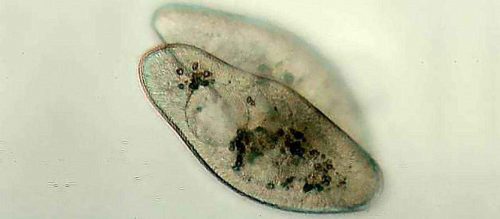
Некоторые учёные выделяют ещё одну группу беспозвоночных – простейшие. Тело этих организмов состоит из одной клетки, которая выполняет все основные функции. Среди простейших известны такие организмы, как амёба, инфузория, малярийный плазмодий. Очевидно, что все они беспозвоночные, однако к царству животных не относятся из-за своей простоты строения.

Гугломаг
Спрашивай! Не стесняйся!
Задать вопрос
Не все нашли? Используйте поиск по сайту
Беспозвоночные животные (3 класс, доклад)
Опубликовано: 22 января 2017 года
Всем известно, что у человека есть позвоночник. Он помогает нам держать спину прямо и поднимать тяжести. Однако многие животные обходятся без позвоночника. Их тело устроено по-другому и позвоночник им не нужен. Такие живые существа называются беспозвоночными.
Беспозвоночные животные имеют небольшие размеры и большинство из них относятся к насекомым. Например, позвоночника лишены мухи, пчелы, стрекозы, пауки. Однако есть и более крупные представители живого мира, обходящиеся без позвоночника.
Кальмар
Кальмары – обитатели морей. Разные виды кальмаров различаются по своим размерам. Те кальмары, которых можно увидеть на прилавках продуктового магазина, относительно малы. Крупные кальмары могут вырасти до 10 метров в длину.
Почти все тело кальмара состоит из мышц. Оно очень гибкое и имеет вытянутую форму. Все это позволяет кальмару быстро и ловко передвигаться в воде.
Осьминог
Осьминоги чем-то напоминают кальмаров. Они также живут в воде и имеют щупальца с присосками. Самые крохотные осьминоги поместятся даже в чайную ложку, а вот крупные экземпляры превышают по весу 100 килограммов. Некоторые осьминоги – ядовиты.
И осьминоги и кальмары имеют голубую кровь и способны изменять окраску кожи для того чтобы стать менее заметными для хищников.
Пиявки
Пиявки – разновидность червей. Пиявку можно встретить в небольшом водоеме или реке. Там они живут питаясь кровью водных обитателей или личинками.
Тело пиявки способно заметно увеличиваться в размерах после того, как она насосется кровью. В народной медицине применяют лечение пиявками: считается, что они отсасывают «плохую» кровь, тем самым очищая человека от болезни.
Улитка
Улитки встречаются повсеместно. Они стоят из скользкого тела и круглого твердого панциря. В случае опасности улитка прячется в свой панцирь для того, чтобы ее не съели.
Некоторые люди держат улиток дома в качестве домашних питомцев. Домашние виноградные улитки не похожи на тех, что можно увидеть в лесу: они крупнее и красивее.
Разновидностей беспозвоночных животных очень много. Многие из ни живут совсем рядом с нами, а некоторых можно увидеть только в зоопарке или на фогорафиях.
Еще по теме …
- Энциклопедия
- Животные
- Беспозвоночные животные
Наверное, каждый из нас в курсе, что человек имеет позвоночник. Он выручает нас на протяжении всей жизни. Помогает держать ровную осанку, поднимать тяжести и выполнять различные физические нагрузки. Интересно то, что есть другие живые существа, которые могут обходиться без позвоночника и при этом хорошо себя чувствуют. Таких животных называют беспозвоночными.
Такие животные обычно имеют маленький размер, а встречаются беспозвоночные чаще всего среди насекомых. Такие насекомые как пауки, стрекозы, пчелы, мухи не имеют позвоночника. Но несмотря на то, что среди насекомых количество беспозвоночных преобладает, в числе более крупных животных тоже встречаются подобные особи.
Кальмары
Кальмары – это морские жители. В природе существует большое количество разновидностей кальмаров, которые ко всему прочему еще различаются и по размеру. Некоторые кальмары могут достигать в длину 10 метров. У кальмара нет позвоночника, но зато он обладает гибкой и вытянутой формой тела, которая состоит из крепких развитых мышц. Благодаря таким природным особенностям кальмар может быстро и ловком перемещаться под водой.
Пиявки
Пиявки являются родственной разновидностью червей. Место обитания пиявок – это небольшие водоемы и реки. Пиявки кровососущие животные, поэтому питаются они кровью других подводных обитателей. Пиявки обладают полезными свойствами для человека, в медицине их используют для очистки крови от вредных веществ.
Улитки
Эти живые организмы встречаются практически везде. Их туловище представляет собой скользкое тело похожее на желе. Так же у улиток есть круглый твердый панцирь. Панцирь необходим улитке для самозащиты, в случае угрозы она залезает полностью под него, чтобы не быть съеденной. Улиток можно держать дома в качестве домашних животных.
Осьминог
Эти животные многими признаками напоминают кальмаров. Они тоже обитают под водой и обладают щупальцами. Самый маленький вид осьминога может поместиться в чайной ложке, самые большие могут иметь огромный вес чуть ли не до 100 килограммов. Так же в природе встречаются ядовитые осьминоги, они опасны для человека. Осьминоги могут менять свой телесный окрас, чтобы в момент угрозы стать незаметней для хищника.
В природе существует много беспозвоночных животных. Все они имеют разную форму и предназначение. Некоторые беспозвоночные могут обитать рядом с человеком, а какие-то живут так далеко от нас, что познакомиться с ними мы можем только по фотографиям или документальным фильмам.
Беспозвоночные животные доклад вариант №2
Животные, у которых нет позвоночника, называются беспозвоночными. Их организм устроен так, что позвоночник им не нужен.
Беспозвоночные животные являются самым распространённым и многочисленным типом живых организмов на планете. Их можно встретить везде в природе: в океане, реке, на суше, в почве.
Самая распространённая группа животных на Земле – членистоногие. Из них около 90 % составляют насекомые. У насекомых твердая оболочка тела, крылья и несколько пар членистых ходильных ног. У муравьев, жуков, клопов, тараканов, мух, блох, пчел и других насекомых шесть ног. У паукообразных, например пауков и скорпионов восемь ног, а у многоножек и ракообразных (крабов, омаров, креветок) – еще больше. Насекомые встречаются почти повсюду – на земле, под землей и в воздухе, в лесах, полях и пустынях, на болотах и ледниках, в реках, озерах и глубоких пещерах. В городских квартирах живут мухи, муравьи, моль.
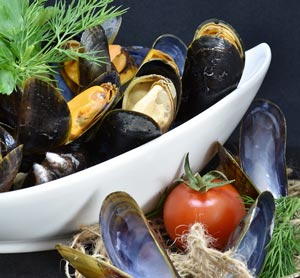
Самый крошечный представитель беспозвоночных животных протисты (амебы, диатомовые водоросли, инфузории).
Черви – мягкотелые беспозвоночные животные с вытянутым безногим скользким телом, которые обычно ползают, извиваясь. Выглядят они не очень привлекательно. Но это одни из самых разнообразных и важных животных на земле. К ним относятся и дождевые черви и крошечные глисты.
Медузы, полипы, кораллы, актинии, губки относятся к кишечнополостным беспозвоночным животным.
3 класс, 5 класс
Беспозвоночные животные
Популярные темы сообщений
- Русский народный костюм
Народный костюм – визитная карточка нашего государства. Если правильно расшифровать этот код, можно понять культурный, исторический, географический и экономический аспекты жизни предков, а особо любознательные сумеют постичь загадку русской души.
- Город Балашиха
Балашиха – это большой крупный город, который расположен в Московской области. Город расположен по берегам рек Пехорка и Горенка. В Балашихе проживает около 500 тыс. человек.
- Безработица (понятие и виды, ее последствиеи причины)
Безработица – это отдельная составляющая позиция экономики страны. Часть или категория активных в экономическом плане граждан, одна из составляющих всего трудоспособного населения.
- Первобытные люди
Первые останки первобытного человека были найдены археологами в Африке в 1960 году. Именно тогда был найден первый представитель рода Homo( с лат. «люди»), живший еще 2 миллиона лет назад. Однако в эволюции человека не всё так просто.
- Вернадский Владимир
Если посмотреть биографию Вернадского, то отчетливо видно, что он относился к тем ученым, которые работали в разных областях. Образование он получил биологическое, однако главный вклад его в науку затрагивает изучение минералогии,
- Доклады
- Биология
- Беспозвоночные животные
Доклад сообщение Беспозвоночные животные
Беспозвоночные животные самая многочисленная группа организмов, населяющих планету. Они составляют около 97% от общего количества живых существ. Беспозвоночные – это животные, у которых отсутствует костный скелет и соответственно позвоночник. Видовой состав группы настолько разнообразен, что ученые не знают точного его количества. Принято считать, что группа включает более 30 миллионов видов животных.
Наиболее известными представителями беспозвоночных являются членистоногие, моллюски, иглокожие, губки, кольчатые черви и кишечнополостные.
Большое разнообразие видового состава группы создает определенные сложности для ее изучения. Однако ученные на основе общности внешних и физиологических признаков смогли объединить представителей беспозвоночных в отдельные самостоятельные подгруппы. Каждая такая подгруппа включает животных с общими простыми признаками. Так представители членистоногих имеют сегментированное строение тела и конечностей. Иглокожие обладают радиальной симметрией. А представители стрекающих известны наличием гастроваскулярной полости с отверстием, окруженным стрекательными щупальцами.
Беспозвоночные животные настолько разнообразны, что изучать их строение можно лишь на основе отдельных подгрупп. Общим признаком, объединяющим всех представителей беспозвоночных, является отсутствие у них позвоночника. Остальные признаки являются настолько различными, что рассматривать анатомическое строение, происхождение, физиологическую приспособленность животных группы намного легче в пределах самостоятельных подгрупп, таких как кишечнополостные, кольчатые черви, членистоногие.
Представители беспозвоночных стали одними из первых многоклеточных организмов, появившихся на планете. Именно они стали прародителями хордовых животных, давших начало группе позвоночных: рыбам, земноводным, птицам и млекопитающим.
Вариант 2
Беспозвоночные — это животные без позвоночника или костного скелета.
Они варьируются по размеру от микроскопических клещей и почти невидимых мух до гигантских кальмаров с глазами размером с футбольный мяч.
На сегодняшний день это самая большая группа в животном мире: 97 процентов всех животных являются беспозвоночными. На сегодняшний день описано 1,25 миллиона видов, большинство из которых являются насекомыми, и есть еще миллионы, которые можно обнаружить. Общее количество видов беспозвоночных может составлять 5, 10 или даже 30 миллионов, по сравнению с 60 000 позвоночных.
Если вы хотите идентифицировать насекомых, вы должны изучить части их анатомии. Есть три основные части, которые составляют тело насекомого, каждая из которых играет определенную роль.
В отличие от костных позвоночных, беспозвоночные являются животными без позвоночного столба или позвоночника. Беспозвоночные животные представляют собой очень разнообразные формы животных, составляющие около 98% животного мира. Обычно беспозвоночные животные — это животные с мягким телом, не имеющие жесткого и развитого внутреннего скелета, но обычно имеющие жесткий экзоскелет. Их жесткие экзоскелеты служат защитой тела от окружающей среды. Некоторыми примерами беспозвоночных являются улитки, губки, дождевые черви, кальмары, морские звезды, насекомые, бабочки, пауки и медузы.
Более 95% всех животных на земле являются беспозвоночными той или иной формы. Беспозвоночные встречаются повсюду в наземных и водных средах и включают в себя животных, начиная от губок, кораллов и до насекомых, крабов и червей, и это лишь некоторые из них. Более 80% всех беспозвоночных группируются в единый тип членистоногих, который включает пауков, ракообразных, многоножек, многоножек и насекомых.
Некоторые насекомые, такие как серебряные рыбы, не изменяются в течение всей жизни, за исключением увеличения размеров тела. В то время как другие насекомые, такие как клопы или кузнечики, проходят постепенные стадии развития, каждая последующая стадия (или нимфа) немного более развита, чем предыдущая. Например, крылья начинают развиваться из маленьких крыловых зачатков и увеличиваться с каждой линькой.
Другие насекомые, такие как мотыльки или жуки, типичны для насекомых, которые претерпевают ряд резких изменений по мере взросления; яйцо — личинки — куколка / куколка — взрослая. У таких насекомых крылья развиваются внутри тела и видны только после того, как взрослый выходит из куколки.
Доклад на тему Беспозвоночные животные
Согласно научным данным более 96 процентов, живущих на планете организмов, считаются беспозвоночными. Основная их особенность в том, что у них полностью отсутствует позвоночник. Также они являются первыми живыми существами, появившимися на земле. Большинство видов беспозвоночных по сей день не изучено.
Стоит рассмотреть несколько групп беспозвоночных животных:
Моллюски. Это мидии, улитки, кальмары, рапаны, устрицы и многие другие представители этой группы. Основные характеристики представляют собой ногу, основную массу и оболочку.
Нога помогает животному перемещаться без особого труда, располагаясь в нижней части, выделяя специальные железы для перемещения.
В основной массе располагаются органы пищеварительной, сердечной системы, и все остальное. У моллюсков открытая кровеносная система.
Оболочка помогает животным защитить внутренние органы. Она состоит из хитина, карбоната кальция и белков.
Членистоногие. Это самая большая группа беспозвоночным животных. В нее входят пауки и скорпионы, клещи и многоножки, большое количество ракообразных.
У большинства членистоногих имеется экзоскелет, который защищает данных живых существ от многих внешних воздействий. Но у него есть небольшая особенность, он не может расти и поэтому у животного происходит линька, после которой формируется новый. Это довольно продвинутый вид беспозвоночных, так как они имеют хорошо развитую нервную систему. Членистоногие распространены во многих средах обитания, на суше, в пресной и соленой воде, в пустыне и т.д.
У членистоногих имеется полная симметрия тела, и чаще всего есть наличие большого количества пар конечностей.
Иглокожие. Наиболее известные из них это морские ежи, морские звезды и многие другие. Эволюционируя, они научились перемещаться, в отличие от своих дальних родственников.
По сравнению с членистоногими иглокожие животные имеют не экзоскелет, а эндоскелет. Это наличие мощной каркасной структуры. Каркас состоит из известковых пластинок.
В ходе революции двусторонняя симметрия сменилась на радиальную. Это означает что их тело подразделяется на 5 равных частей.
3, 5 класс
Картинка к сообщению Беспозвоночные животные
Популярные сегодня темы
- Князь Святослав
В 942 году у киевского князя Игоря и его жены Ольги родился сын, имя которому дали Святослав. Согласно древним летописям, это был единственный сын у князя Игоря, и только ему было суждено ста
- Опера
Под «оперой» подразумевается музыкально – драматическое произведение, которое, как правило, исполняется певцами в сопровождении оркестра. У каждой оперы имеется так называемое «либретто»
- Первые книги на Руси
Развитие письменности на Руси началось после изобретения славянской азбуки в 863 году двумя братьями: Кириллом и Мефодием. Оба великих просветителя были уроженцы города Салоники.
- Синица
Синица – небольшая бойкая птичка, принадлежащая к отряду воробьинообразных. Дружелюбна, доверчива, любит щебетать. Специалисты утверждают, что она способны издавать свыше 40 различных звуковы
- Коррозия металлов
Со времени своего появления человек активно изучал то место, в котором оно обитал, что и привело его к прогрессу, и началу жизни на вершине всего животного мира, таким образом, а именно с по
- Значение водорослей в природе и жизни человека
Миллионы лет назад, когда на нашей планете еще не было атмосферы, в процессе эволюции появились первые растения — водоросли. Именно они дали начало всему живому (в том числе и нам), став глав
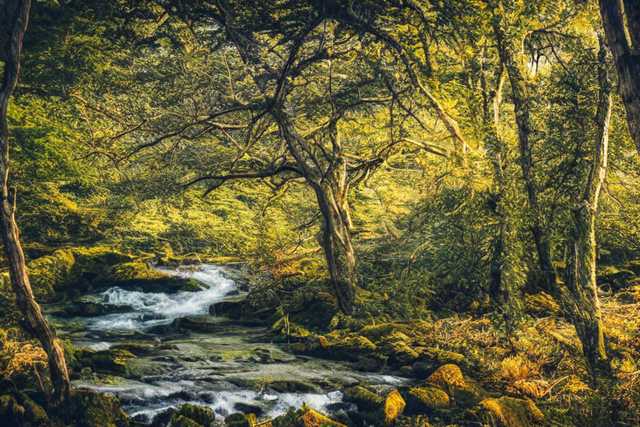
| Invertebrates
Temporal range: Cryogenian to Present, 665–0 Ma Pha. Proterozoic Archean Had’n |
|
|---|---|

|
|
| Left to right: Chrysaora fuscescens (Cnidaria), Fromia indica (Echinodermata), Caribbean reef squid (Mollusca), Drosophila melanogaster (Arthropoda), Aplysina lacunosa (Porifera), Pseudobiceros hancockanus (Platyhelminthes), Hirudo medicinalis (Annelida), Polycarpa aurata (Tunicata), Milnesium tardigradum (Tardigrada). | |
| Scientific classification |
|
| (unranked): | Filozoa |
| Kingdom: | Animalia |
| Groups included | |
|
Invertebrates are a paraphyletic group of animals that neither possess nor develop a vertebral column (commonly known as a backbone or spine), derived from the notochord. This is a grouping including all animals apart from the chordate subphylum Vertebrata. Familiar examples of invertebrates include arthropods, mollusks, annelids, echinoderms and cnidarians.
The majority of animal species are invertebrates; one estimate puts the figure at 97%.[1] Many invertebrate taxa have a greater number and variety of species than the entire subphylum of Vertebrata.[2] Invertebrates vary widely in size, from 50 μm (0.002 in) rotifers[3] to the 9–10 m (30–33 ft) colossal squid.[4]
Some so-called invertebrates, such as the Tunicata and Cephalochordata, are more closely related to vertebrates than to other invertebrates. This makes the invertebrates paraphyletic, so the term has little meaning in taxonomy.
Etymology
The word «invertebrate» comes from the Latin word vertebra, which means a joint in general, and sometimes specifically a joint from the spinal column of a vertebrate. The jointed aspect of vertebra is derived from the concept of turning, expressed in the root verto or vorto, to turn.[5] The prefix in- means «not» or «without».[6]
Taxonomic significance
The term invertebrates is not always precise among non-biologists since it does not accurately describe a taxon in the same way that Arthropoda, Vertebrata or Manidae do. Each of these terms describes a valid taxon, phylum, subphylum or family. «Invertebrata» is a term of convenience, not a taxon; it has very little circumscriptional significance except within the Chordata. The Vertebrata as a subphylum comprises such a small proportion of the Metazoa that to speak of the kingdom Animalia in terms of «Vertebrata» and «Invertebrata» has limited practicality. In the more formal taxonomy of Animalia other attributes that logically should precede the presence or absence of the vertebral column in constructing a cladogram, for example, the presence of a notochord. That would at least circumscribe the Chordata. However, even the notochord would be a less fundamental criterion than aspects of embryological development and symmetry[7] or perhaps bauplan.[8]
Despite this, the concept of invertebrates as a taxon of animals has persisted for over a century among the laity,[9] and within the zoological community and in its literature it remains in use as a term of convenience for animals that are not members of the Vertebrata.[10] The following text reflects earlier scientific understanding of the term and of those animals which have constituted it. According to this understanding, invertebrates do not possess a skeleton of bone, either internal or external. They include hugely varied body plans. Many have fluid-filled, hydrostatic skeletons, like jellyfish or worms. Others have hard exoskeletons, outer shells like those of insects and crustaceans. The most familiar invertebrates include the Protozoa, Porifera, Coelenterata, Platyhelminthes, Nematoda, Annelida, Echinodermata, Mollusca and Arthropoda. Arthropoda include insects, crustaceans and arachnids.
Number of extant species
By far the largest number of described invertebrate species are insects. The following table lists the number of described extant species for major invertebrate groups as estimated in the IUCN Red List of Threatened Species, 2014.3.[11]
| Invertebrate group | Phylum | Image | Estimated number of described species[11] |
|---|---|---|---|
| Insects | Arthropoda | 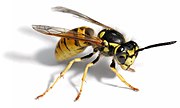
|
1,000,000 |
| Arachnids | Arthropoda | 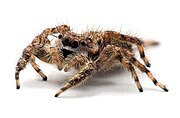
|
102,248 |
| Snails | Mollusca | 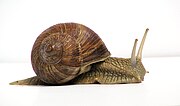
|
85,000 |
| Crustaceans | Arthropoda | 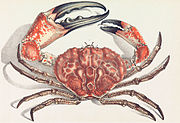
|
47,000 |
| Clams | Mollusca | 
|
20,000 |
| Corals | Cnidaria | 
|
2,175 |
| Octopuses/Squid | Mollusca | 
|
900 |
| Velvet worms | Onychophora | 
|
165 |
| Nautilus | Mollusca | 
|
6 |
| Horseshoe crabs | Arthropoda | 
|
4 |
| Others jellyfish, echinoderms, sponges, other worms etc. |
— | — | 68,658 |
| Total: | ~1,300,000 |
The IUCN estimates that 66,178 extant vertebrate species have been described,[11] which means that over 95% of the described animal species in the world are invertebrates.
Characteristics
The trait that is common to all invertebrates is the absence of a vertebral column (backbone): this creates a distinction between invertebrates and vertebrates. The distinction is one of convenience only; it is not based on any clear biologically homologous trait, any more than the common trait of having wings functionally unites insects, bats, and birds, or than not having wings unites tortoises, snails and sponges. Being animals, invertebrates are heterotrophs, and require sustenance in the form of the consumption of other organisms. With a few exceptions, such as the Porifera, invertebrates generally have bodies composed of differentiated tissues. There is also typically a digestive chamber with one or two openings to the exterior.
Morphology and symmetry
The body plans of most multicellular organisms exhibit some form of symmetry, whether radial, bilateral, or spherical. A minority, however, exhibit no symmetry. One example of asymmetric invertebrates includes all gastropod species. This is easily seen in snails and sea snails, which have helical shells. Slugs appear externally symmetrical, but their pneumostome (breathing hole) is located on the right side. Other gastropods develop external asymmetry, such as Glaucus atlanticus that develops asymmetrical cerata as they mature. The origin of gastropod asymmetry is a subject of scientific debate.[12]
Other examples of asymmetry are found in fiddler crabs and hermit crabs. They often have one claw much larger than the other. If a male fiddler loses its large claw, it will grow another on the opposite side after moulting. Sessile animals such as sponges are asymmetrical[13] alongside coral colonies (with the exception of the individual polyps that exhibit radial symmetry); alpheidae claws that lack pincers; and some copepods, polyopisthocotyleans, and monogeneans which parasitize by attachment or residency within the gill chamber of their fish hosts).
Nervous system
Neurons differ in invertebrates from mammalian cells. Invertebrates cells fire in response to similar stimuli as mammals, such as tissue trauma, high temperature, or changes in pH. The first invertebrate in which a neuron cell was identified was the medicinal leech, Hirudo medicinalis.[14][15]
Learning and memory using nociceptors in the sea hare, Aplysia has been described.[16][17][18] Mollusk neurons are able to detect increasing pressures and tissue trauma.[19]
Neurons have been identified in a wide range of invertebrate species, including annelids, molluscs, nematodes and arthropods.[20][21]
Respiratory system
Tracheal system of dissected cockroach. The largest tracheae run across the width of the body of the cockroach and are horizontal in this image. Scale bar, 2 mm.
The tracheal system branches into progressively smaller tubes, here supplying the crop of the cockroach. Scale bar, 2.0 mm.
One type of invertebrate respiratory system is the open respiratory system composed of spiracles, tracheae, and tracheoles that terrestrial arthropods have to transport metabolic gases to and from tissues.[22] The distribution of spiracles can vary greatly among the many orders of insects, but in general each segment of the body can have only one pair of spiracles, each of which connects to an atrium and has a relatively large tracheal tube behind it. The tracheae are invaginations of the cuticular exoskeleton that branch (anastomose) throughout the body with diameters from only a few micrometres up to 0.8 mm. The smallest tubes, tracheoles, penetrate cells and serve as sites of diffusion for water, oxygen, and carbon dioxide. Gas may be conducted through the respiratory system by means of active ventilation or passive diffusion. Unlike vertebrates, insects do not generally carry oxygen in their haemolymph.[23]
A tracheal tube may contain ridge-like circumferential rings of taenidia in various geometries such as loops or helices. In the head, thorax, or abdomen, tracheae may also be connected to air sacs. Many insects, such as grasshoppers and bees, which actively pump the air sacs in their abdomen, are able to control the flow of air through their body. In some aquatic insects, the tracheae exchange gas through the body wall directly, in the form of a gill, or function essentially as normal, via a plastron. Note that despite being internal, the tracheae of arthropods are shed during moulting (ecdysis).[24]
Reproduction
Like vertebrates, most invertebrates reproduce at least partly through sexual reproduction. They produce specialized reproductive cells that undergo meiosis to produce smaller, motile spermatozoa or larger, non-motile ova.[25] These fuse to form zygotes, which develop into new individuals.[26] Others are capable of asexual reproduction, or sometimes, both methods of reproduction.
Social behavior is widespread in invertebrates, including cockroaches, termites, aphids, thrips, ants, bees, Passalidae, Acari, spiders, and more.[27] Social interaction is particularly salient in eusocial species but applies to other invertebrates as well.
Insects recognize information transmitted by other insects.[28][29][30]
Phyla
The term invertebrates covers several phyla. One of these are the sponges (Porifera). They were long thought to have diverged from other animals early.[31] They lack the complex organization found in most other phyla.[32] Their cells are differentiated, but in most cases not organized into distinct tissues.[33] Sponges typically feed by drawing in water through pores.[34] Some speculate that sponges are not so primitive, but may instead be secondarily simplified.[35] The Ctenophora and the Cnidaria, which includes sea anemones, corals, and jellyfish, are radially symmetric and have digestive chambers with a single opening, which serves as both the mouth and the anus.[36] Both have distinct tissues, but they are not organized into organs.[37] There are only two main germ layers, the ectoderm and endoderm, with only scattered cells between them. As such, they are sometimes called diploblastic.[38]
The Echinodermata are radially symmetric and exclusively marine, including starfish (Asteroidea), sea urchins, (Echinoidea), brittle stars (Ophiuroidea), sea cucumbers (Holothuroidea) and feather stars (Crinoidea).[39]
The largest animal phylum is also included within invertebrates: the Arthropoda, including insects, spiders, crabs, and their kin. All these organisms have a body divided into repeating segments, typically with paired appendages. In addition, they possess a hardened exoskeleton that is periodically shed during growth.[40] Two smaller phyla, the Onychophora and Tardigrada, are close relatives of the arthropods and share some traits with them, excluding the hardened exoskeleton. The Nematoda or roundworms, are perhaps the second largest animal phylum, and are also invertebrates. Roundworms are typically microscopic, and occur in nearly every environment where there is water.[41] A number are important parasites.[42] Smaller phyla related to them are the Kinorhyncha, Priapulida, and Loricifera. These groups have a reduced coelom, called a pseudocoelom. Other invertebrates include the Nemertea or ribbon worms, and the Sipuncula.
Another phylum is Platyhelminthes, the flatworms.[43] These were originally considered primitive, but it now appears they developed from more complex ancestors.[44] Flatworms are acoelomates, lacking a body cavity, as are their closest relatives, the microscopic Gastrotricha.[45] The Rotifera or rotifers, are common in aqueous environments. Invertebrates also include the Acanthocephala or spiny-headed worms, the Gnathostomulida, Micrognathozoa, and the Cycliophora.[46]
Also included are two of the most successful animal phyla, the Mollusca and Annelida.[47][48] The former, which is the second-largest animal phylum by number of described species, includes animals such as snails, clams, and squids, and the latter comprises the segmented worms, such as earthworms and leeches. These two groups have long been considered close relatives because of the common presence of trochophore larvae, but the annelids were considered closer to the arthropods because they are both segmented.[49] Now, this is generally considered convergent evolution, owing to many morphological and genetic differences between the two phyla.[50]
Among lesser phyla of invertebrates are the Hemichordata, or acorn worms,[51] and the Chaetognatha, or arrow worms. Other phyla include Acoelomorpha, Brachiopoda, Bryozoa, Entoprocta, Phoronida, and Xenoturbellida.
Classification of invertebrates
Invertebrates can be classified into several main categories, some of which are taxonomically obsolescent or debatable, but still used as terms of convenience. Each however appears in its own article at the following links.[52]
- Sponges (Porifera)
- Comb jellies (Ctenophora)
- Medusozoans and corals (Cnidaria)
- Acoels (Xenacoelomorpha)
- Flatworms (Platyhelminthes)
- Bristleworms, earthworms and leeches (Annelida)
- Insects, springtails, crustaceans, myriapods, chelicerates (Arthropoda)
- Chitons, snails, slugs, bivalves, tusk shells, cephalopods (Mollusca)
- Roundworms or threadworms (Nematoda)
- Rotifers (Rotifera)
- Tardigrades (Tardigrada)
- Scalidophores (Scalidophora)
- Lophophorates (Lophophorata)
- Velvet worms (Onychophora)
- Arrow worms (Chaetognatha)
- Gordian worms or horsehair worms (Nematomorpha)
- Ribbon worms (Nemertea)
- Placozoa
- Loricifera
- Starfishes, sea urchins, sea cucumbers, sea lilies and brittle stars (Echinodermata)
- Acorn worms, cephalodiscids and graptolites (Hemichordata)
- Lancelets (Amphioxiformes)
- Salps, pyrosomes, doliolids, larvaceans and sea squirts (Tunicata)
History
The earliest animal fossils appear to be those of invertebrates. 665-million-year-old fossils in the Trezona Formation at Trezona Bore, West Central Flinders, South Australia have been interpreted as being early sponges.[53] Some paleontologists suggest that animals appeared much earlier, possibly as early as 1 billion years ago[54] though they probably became multicellular in the Tonian. Trace fossils such as tracks and burrows found in the late Neoproterozoic era indicate the presence of triploblastic worms, roughly as large (about 5 mm wide) and complex as earthworms.[55]
Around 453 MYA, animals began diversifying, and many of the important groups of invertebrates diverged from one another. Fossils of invertebrates are found in various types of sediment from the Phanerozoic.[56] Fossils of invertebrates are commonly used in stratigraphy.[57]
Classification
Carl Linnaeus divided these animals into only two groups, the Insecta and the now-obsolete Vermes (worms). Jean-Baptiste Lamarck, who was appointed to the position of «Curator of Insecta and Vermes» at the Muséum National d’Histoire Naturelle in 1793, both coined the term «invertebrate» to describe such animals and divided the original two groups into ten, by splitting Arachnida and Crustacea from the Linnean Insecta, and Mollusca, Annelida, Cirripedia, Radiata, Coelenterata and Infusoria from the Linnean Vermes. They are now classified into over 30 phyla, from simple organisms such as sea sponges and flatworms to complex animals such as arthropods and molluscs.
Significance of the group
Invertebrates are animals without a vertebral column. This has led to the conclusion that invertebrates are a group that deviates from the normal, vertebrates. This has been said to be because researchers in the past, such as Lamarck, viewed vertebrates as a «standard»: in Lamarck’s theory of evolution, he believed that characteristics acquired through the evolutionary process involved not only survival, but also progression toward a «higher form», to which humans and vertebrates were closer than invertebrates were. Although goal-directed evolution has been abandoned, the distinction of invertebrates and vertebrates persists to this day, even though the grouping has been noted to be «hardly natural or even very sharp.» Another reason cited for this continued distinction is that Lamarck created a precedent through his classifications which is now difficult to escape from. It is also possible that some humans believe that, they themselves being vertebrates, the group deserves more attention than invertebrates.[58] In any event, in the 1968 edition of Invertebrate Zoology, it is noted that «division of the Animal Kingdom into vertebrates and invertebrates is artificial and reflects human bias in favor of man’s own relatives.» The book also points out that the group lumps a vast number of species together, so that no one characteristic describes all invertebrates. In addition, some species included are only remotely related to one another, with some more related to vertebrates than other invertebrates (see Paraphyly).[59]
In research
For many centuries, invertebrates were neglected by biologists, in favor of big vertebrates and «useful» or charismatic species.[60] Invertebrate biology was not a major field of study until the work of Linnaeus and Lamarck in the 18th century.[60] During the 20th century, invertebrate zoology became one of the major fields of natural sciences, with prominent discoveries in the fields of medicine, genetics, palaeontology, and ecology.[60] The study of invertebrates has also benefited law enforcement, as arthropods, and especially insects, were discovered to be a source of information for forensic investigators.[40]
Two of the most commonly studied model organisms nowadays are invertebrates: the fruit fly Drosophila melanogaster and the nematode Caenorhabditis elegans. They have long been the most intensively studied model organisms, and were among the first life-forms to be genetically sequenced. This was facilitated by the severely reduced state of their genomes, but many genes, introns, and linkages have been lost. Analysis of the starlet sea anemone genome has emphasised the importance of sponges, placozoans, and choanoflagellates, also being sequenced, in explaining the arrival of 1500 ancestral genes unique to animals.[61] Invertebrates are also used by scientists in the field of aquatic biomonitoring to evaluate the effects of water pollution and climate change.[62]
See also
- Invertebrate zoology
- Invertebrate paleontology
- Marine invertebrates
- Pain in invertebrates
References
- ^ May, Robert M. (16 September 1988). «How Many Species Are There on Earth?». Science. 241 (4872): 1441–1449. Bibcode:1988Sci…241.1441M. doi:10.1126/science.241.4872.1441. JSTOR 1702670. PMID 17790039. S2CID 34992724. Archived from the original on 15 November 2016. Retrieved 17 June 2014.
- ^ Richards, O. W.; Davies, R.G. (1977). Imms’ General Textbook of Entomology: Volume 1: Structure, Physiology and Development Volume 2: Classification and Biology. Berlin: Springer. ISBN 978-0-412-61390-6.
- ^ Howey, Richard L. (1999). «Welcome to the Wonderfully Weird World of Rotifers». Micscape Magazine. Retrieved 19 February 2010.
- ^ Roper, C.F.E. & P. Jereb (2010). Family Cranchiidae. In: P. Jereb & C.F.E. Roper (eds.) Cephalopods of the world. An annotated and illustrated catalogue of species known to date. Volume 2. Myopsid and Oegopsid Squids. FAO Species Catalogue for Fishery Purposes No. 4, Vol. 2. FAO, Rome. pp. 148–178.
- ^ Tucker, T. G. (1931). A Concise Etymological Dictionary of Latin. Halle (Saale): Max Niemeyer Verlag.
- ^ Skeat, Walter William (1882). An etymological dictionary of the English language. Clarendon Press. p. 301.
- ^ Pechenik, Jan (1996). Biology of the Invertebrates. Dubuque: Wm. C. Brown Publishers. ISBN 978-0-697-13712-8.
- ^ Brusca, Richard C.; Brusca, Gary J. (1990). Invertebrates. Sunderland: Sinauer Associates. ISBN 978-0-87893-098-2.
- ^ Brown, Lesley (1993). The New shorter Oxford English dictionary on historical principles. Oxford [Eng.]: Clarendon. ISBN 978-0-19-861271-1.
- ^ Louis Agassiz (21 March 2013). Essay on Classification. Courier Corporation. pp. 115–. ISBN 978-0-486-15135-9.
- ^ a b c The World Conservation Union. 2014. IUCN Red List of Threatened Species, 2014.3. Summary Statistics for Globally Threatened Species. Table 1: Numbers of threatened species by major groups of organisms (1996–2014).
- ^ Louise R. Page (2006). «Modern insights on gastropod development: Reevaluation of the evolution of a novel body plan». Integrative and Comparative Biology. 46 (2): 134–143. doi:10.1093/icb/icj018. PMID 21672730.
- ^ Symmetry, biological, cited at FactMonster.com from The Columbia Electronic Encyclopedia (2007).
- ^ Nicholls, J.G. and Baylor, D.A., (1968). Specific modalities and receptive fields of sensory neurons in CNS of the leech. Journal of Neurophysiology, 31: 740–756
- ^ Pastor, J., Soria, B. and Belmonte, C., (1996). Properties of the nociceptive neurons of the leech segmental ganglion. Journal of Neurophysiology, 75: 2268–2279
- ^ Byrne, J.H., Castellucci, V.F. and Kandel, E.R., (1978). Contribution of individual mechanoreceptor sensory neurons to defensive gill-withdrawal reflex in Aplysia. Journal of Neurophysiology, 41: 418–431
- ^ Castellucci, V., Pinsker, H., Kupfermann, I. and Kandel, E.R., (1970). Neuronal mechanisms of habituation and dishabituation of the gill-withdrawal reflex in Aplysia. Science, 167: 1745–1748
- ^ Fischer, T.M., Jacobson, D.A., Counsell, A.N., et al., (2011). Regulation of low-threshold afferent activity may contribute to short-term habituation in Aplysia californica. Neurobiology of Learning and Memory, 95: 248-259
- ^ Illich, P.A and Walters, E.T., (1997). Mechanosensory neurons innervating Aplysia siphon encode noxious stimuli and display nociceptive sensitization. The Journal of Neuroscience, 17: 459-469
- ^ Eisemann, C.H., Jorgensen, W.K., Merritt, D.J., Rice, M.J., Cribb, B.W., Webb, P.D. and Zalucki, M.P., (1984). «Do insects feel pain? — A biological view». Cellular and Molecular Life Sciences, 40: 1420–1423
- ^ St John Smith, E. and Lewin, G.R., (2009). Nociceptors: a phylogenetic view. Journal of Comparative Physiology A, 195: 1089-1106
- ^ Wasserthal, Lutz T. (1998). Chapter 25: The Open Hemolymph System of Holometabola and Its Relation to the Tracheal Space. In «Microscopic Anatomy of Invertebrates». Wiley-Liss, Inc. ISBN 0-471-15955-7.
- ^ Westneat, Mark W.; Betz, Oliver; Blob, Richard W.; Fezzaa, Kamel; Cooper, James W.; Lee, Wah-Keat (January 2003). «Tracheal Respiration in Insects Visualized with Synchrotron X-ray Imaging». Science. 299 (5606): 558–560. Bibcode:2003Sci…299..558W. doi:10.1126/science.1078008. PMID 12543973. S2CID 43634044.[permanent dead link]
- ^ Ewer, John (11 October 2005). «How the Ecdysozoan Changed Its Coat». PLOS Biology. 3 (10): e349. doi:10.1371/journal.pbio.0030349. ISSN 1545-7885. PMC 1250302. PMID 16207077.
- ^ Schwartz, Jill (2010). Master the GED 2011 (w/CD). Peterson’s. p. 371. ISBN 978-0-7689-2885-3.
- ^ Hamilton, Matthew B. (2009). Population genetics. Wiley-Blackwell. p. 55. ISBN 978-1-4051-3277-0.
- ^ The Evolution of Social Behavior in Insects and Arachnids. Cambridge University Press. 1997. ISBN 978-0521589772.
- ^
- ^ Seeley T.D.; Visscher P.K.; Passino K.M. (2006). «Group decision making in honey bee swarms». American Scientist. 94 (3): 220–229. doi:10.1511/2006.3.220.
- ^ Frisch, Karl von. (1967) The Dance Language and Orientation of Bees. Cambridge, Massachusetts: The Belknap Press of Harvard University Press.
- ^ Bhamrah, H. S.; Kavita Juneja (2003). An Introduction to Porifera. Anmol Publications PVT. LTD. p. 58. ISBN 978-81-261-0675-2.
- ^ Sumich, James L. (2008). Laboratory and Field Investigations in Marine Life. Jones & Bartlett Learning. p. 67. ISBN 978-0-7637-5730-4.
- ^ Jessop, Nancy Meyer (1970). Biosphere; a study of life. Prentice-Hall. p. 428.
- ^ Sharma, N. S. (2005). Continuity And Evolution Of Animals. Mittal Publications. p. 106. ISBN 978-81-8293-018-6.
- ^ Dunn et al. 2008. «Broad phylogenomic sampling improves resolution of the animal tree of life». Nature 06614.
- ^ Langstroth, Lovell; Libby Langstroth; Todd Newberry; Monterey Bay Aquarium (2000). A living bay: the underwater world of Monterey Bay. University of California Press. p. 244. ISBN 978-0-520-22149-9.
- ^ Safra, Jacob E. (2003). The New Encyclopædia Britannica, Volume 16. Encyclopædia Britannica. p. 523. ISBN 978-0-85229-961-6.
- ^ Kotpal, R. L. (2012). Modern Text Book of Zoology: Invertebrates. Rastogi Publications. p. 184. ISBN 978-81-7133-903-7.
- ^ Alcamo, Edward (1998). Biology Coloring Workbook. The Princeton Review. p. 220. ISBN 978-0-679-77884-4.
- ^ a b Gunn, Alan (2009). Essential forensic biology. John Wiley and Sons. p. 214. ISBN 978-0-470-75804-5.
- ^ Prewitt, Nancy L.; Larry S. Underwood; William Surver (2003). BioInquiry: making connections in biology. John Wiley. p. 289. ISBN 978-0-471-20228-8.
- ^ Schmid-Hempel, Paul (1998). Parasites in social insects. Princeton University Press. p. 75. ISBN 978-0-691-05924-2.
- ^ Gilson, Étienne (2004). El espíritu de la filosofía medieval. Ediciones Rialp. p. 384. ISBN 978-84-321-3492-0.
- ^ Ruiz-Trillo, Iñaki; Riutort, Marta; Littlewood, D. Timothy J.; Herniou, Elisabeth A.; Baguñà, Jaume (March 1999). «Acoel Flatworms: Earliest Extant Bilaterian Metazoans, Not Members of Platyhelminthes». Science. 283 (5409): 1919–1923. Bibcode:1999Sci…283.1919R. doi:10.1126/science.283.5409.1919. ISSN 0036-8075. PMID 10082465. S2CID 6079655.[permanent dead link]
- ^ Todaro, Antonio. «Gastrotricha: Overview». Gastrotricha: World Portal. University of Modena & Reggio Emilia. Retrieved 26 January 2008.
- ^ Kristensen, Reinhardt Møbjerg (July 2002). «An Introduction to Loricifera, Cycliophora, and Micrognathozoa». Integrative and Comparative Biology. 42 (3): 641–651. doi:10.1093/icb/42.3.641. PMID 21708760.
- ^ «Biodiversity: Mollusca». The Scottish Association for Marine Science. Archived from the original on 8 July 2006. Retrieved 19 November 2007.
- ^ Russell, Bruce J. (Writer), Denning, David (Writer) (2000). Branches on the Tree of Life: Annelids (VHS). BioMEDIA ASSOCIATES.
- ^ Eernisse, Douglas J.; Albert, James S.; Anderson, Frank E. (1 September 1992). «Annelida and Arthropoda are not sister taxa: A phylogenetic analysis of spiralean metazoan morphology». Systematic Biology. 41 (3): 305–330. doi:10.2307/2992569. ISSN 1063-5157. JSTOR 2992569.
- ^ Eernisse, Douglas J.; Kim, Chang Bae; Moon, Seung Yeo; Gelder, Stuart R.; Kim, Won (September 1996). «Phylogenetic Relationships of Annelids, Molluscs, and Arthropods Evidenced from Molecules and Morphology». Journal of Molecular Evolution. 43 (3): 207–215. Bibcode:1996JMolE..43..207K. doi:10.1007/PL00006079. PMID 8703086.[dead link]
- ^ Tobin, Allan J.; Jennie Dusheck (2005). Asking about life. Cengage Learning. p. 497. ISBN 978-0-534-40653-0.
- ^ «What Are the Main Groups of Invertebrates?». 4 August 2015.
- ^ Maloof, Adam C.; Rose, Catherine V.; Beach, Robert; Samuels, Bradley M.; Calmet, Claire C.; Erwin, Douglas H.; Poirier, Gerald R.; Yao, Nan; Simons, Frederik J. (17 August 2010). «Possible animal-body fossils in pre-Marinoan limestones from South Australia». Nature Geoscience. 3 (9): 653. Bibcode:2010NatGe…3..653M. doi:10.1038/ngeo934.
- ^ Campbell. Neil A.; Jane B. Reece (2005). Biology (7 ed.). Pearson, Benjamin Cummings. p. 526. ISBN 978-0-8053-7171-0.
- ^ Seilacher, A.; Bose, P.K.; Pflüger, F. (October 1998). «Animals More Than 1 Billion Years Ago: Trace Fossil Evidence from India». Science. 282 (5386): 80–83. Bibcode:1998Sci…282…80S. doi:10.1126/science.282.5386.80. ISSN 0036-8075. PMID 9756480.
- ^ Clarkson, Euan Neilson Kerr (1998). Invertebrate palaeontology and evolution. Wiley-Blackwell. ISBN 978-0-632-05238-7.
- ^ Kummel, Bernhard (1954). Status of invertebrate paleontology, 1953. Ayer Publishing. p. 93. ISBN 978-0-405-12715-1.
- ^ Barnes, Richard Stephen Kent (2001). The Invertebrates: A Synthesis. Wiley-Blackwell. p. 3. ISBN 978-0-632-04761-1.
- ^ Barnes, Robert D. (1968). Invertebrate Zoology (2nd ed.). W.B. Saunders. OCLC 173898.
- ^ a b c Ducarme, Frédéric (2015). «Why study invertebrates? A philosophical argument from Aristotle». No Bones (Smithsonian Institution website).
- ^
N.H. Putnam, NH; et al. (July 2007). «Sea anemone genome reveals ancestral eumetazoan gene repertoire and genomic organization». Science. 317 (5834): 86–94. Bibcode:2007Sci…317…86P. doi:10.1126/science.1139158. ISSN 0036-8075. PMID 17615350. S2CID 9868191. - ^ Lawrence, J.E.; Lunde, K.B.; Mazor, R.D.; Bêche, L.A.; McElravy, E.P.; Resh, V.H. (2010). «Long-Term Macroinvertebrate Responses to Climate Change: Implications for Biological Assessment in Mediterranean-Climate Streams». Journal of the North American Benthological Society. 29 (4): 1424–1440. doi:10.1899/09-178.1. S2CID 84679634.
Further reading
- Hyman, L. H. 1940. The Invertebrates (6 volumes) New York : McGraw-Hill. A classic work.
- Anderson, D. T. (Ed.). (2001). Invertebrate zoology (2nd ed.). Oxford: Oxford University Press.
- Brusca, R. C., & Brusca, G. J. (2003). Invertebrates (2nd ed.). Sunderland, Mass. : Sinauer Associates.
- Miller, S.A., & Harley, J.P. (1996). Zoology (4th ed.). Boston: WCB/McGraw-Hill.
- Pechenik, Jan A. (2005). Biology of the invertebrates. Boston: McGraw-Hill, Higher Education. pp. 590 pp. ISBN 978-0-07-234899-6.
- Ruppert, E. E., Fox, R. S., & Barnes, R. D. (2004). Invertebrate zoology: a functional evolutionary approach. Belmont, CA: Thomas-Brooks/Cole.
- Adiyodi, K.G. & Adyiodi, R.G. (Eds) 1983- . Reproductive Biology of Invertebrates. Wiley, New York. (Many volumes.)
- Giese, A.G. & Pearse, J.S. (Eds) 1974- . Reproduction of Marine Invertebrates. Academic Press, New York. (Many volumes.)
- Advances in Invertebrate Reproduction. Elsevier Science, Amsterdam. (Five volumes.)
External links
- A. R. Maggenti; S. Gardner (2005). Online Dictionary of Invertebrate Zoology.
- Buglife (UK)
- African Invertebrates
| Invertebrates
Temporal range: Cryogenian to Present, 665–0 Ma Pha. Proterozoic Archean Had’n |
|
|---|---|

|
|
| Left to right: Chrysaora fuscescens (Cnidaria), Fromia indica (Echinodermata), Caribbean reef squid (Mollusca), Drosophila melanogaster (Arthropoda), Aplysina lacunosa (Porifera), Pseudobiceros hancockanus (Platyhelminthes), Hirudo medicinalis (Annelida), Polycarpa aurata (Tunicata), Milnesium tardigradum (Tardigrada). | |
| Scientific classification |
|
| (unranked): | Filozoa |
| Kingdom: | Animalia |
| Groups included | |
|
Invertebrates are a paraphyletic group of animals that neither possess nor develop a vertebral column (commonly known as a backbone or spine), derived from the notochord. This is a grouping including all animals apart from the chordate subphylum Vertebrata. Familiar examples of invertebrates include arthropods, mollusks, annelids, echinoderms and cnidarians.
The majority of animal species are invertebrates; one estimate puts the figure at 97%.[1] Many invertebrate taxa have a greater number and variety of species than the entire subphylum of Vertebrata.[2] Invertebrates vary widely in size, from 50 μm (0.002 in) rotifers[3] to the 9–10 m (30–33 ft) colossal squid.[4]
Some so-called invertebrates, such as the Tunicata and Cephalochordata, are more closely related to vertebrates than to other invertebrates. This makes the invertebrates paraphyletic, so the term has little meaning in taxonomy.
Etymology
The word «invertebrate» comes from the Latin word vertebra, which means a joint in general, and sometimes specifically a joint from the spinal column of a vertebrate. The jointed aspect of vertebra is derived from the concept of turning, expressed in the root verto or vorto, to turn.[5] The prefix in- means «not» or «without».[6]
Taxonomic significance
The term invertebrates is not always precise among non-biologists since it does not accurately describe a taxon in the same way that Arthropoda, Vertebrata or Manidae do. Each of these terms describes a valid taxon, phylum, subphylum or family. «Invertebrata» is a term of convenience, not a taxon; it has very little circumscriptional significance except within the Chordata. The Vertebrata as a subphylum comprises such a small proportion of the Metazoa that to speak of the kingdom Animalia in terms of «Vertebrata» and «Invertebrata» has limited practicality. In the more formal taxonomy of Animalia other attributes that logically should precede the presence or absence of the vertebral column in constructing a cladogram, for example, the presence of a notochord. That would at least circumscribe the Chordata. However, even the notochord would be a less fundamental criterion than aspects of embryological development and symmetry[7] or perhaps bauplan.[8]
Despite this, the concept of invertebrates as a taxon of animals has persisted for over a century among the laity,[9] and within the zoological community and in its literature it remains in use as a term of convenience for animals that are not members of the Vertebrata.[10] The following text reflects earlier scientific understanding of the term and of those animals which have constituted it. According to this understanding, invertebrates do not possess a skeleton of bone, either internal or external. They include hugely varied body plans. Many have fluid-filled, hydrostatic skeletons, like jellyfish or worms. Others have hard exoskeletons, outer shells like those of insects and crustaceans. The most familiar invertebrates include the Protozoa, Porifera, Coelenterata, Platyhelminthes, Nematoda, Annelida, Echinodermata, Mollusca and Arthropoda. Arthropoda include insects, crustaceans and arachnids.
Number of extant species
By far the largest number of described invertebrate species are insects. The following table lists the number of described extant species for major invertebrate groups as estimated in the IUCN Red List of Threatened Species, 2014.3.[11]
| Invertebrate group | Phylum | Image | Estimated number of described species[11] |
|---|---|---|---|
| Insects | Arthropoda | 
|
1,000,000 |
| Arachnids | Arthropoda | 
|
102,248 |
| Snails | Mollusca | 
|
85,000 |
| Crustaceans | Arthropoda | 
|
47,000 |
| Clams | Mollusca | 
|
20,000 |
| Corals | Cnidaria | 
|
2,175 |
| Octopuses/Squid | Mollusca | 
|
900 |
| Velvet worms | Onychophora | 
|
165 |
| Nautilus | Mollusca | 
|
6 |
| Horseshoe crabs | Arthropoda | 
|
4 |
| Others jellyfish, echinoderms, sponges, other worms etc. |
— | — | 68,658 |
| Total: | ~1,300,000 |
The IUCN estimates that 66,178 extant vertebrate species have been described,[11] which means that over 95% of the described animal species in the world are invertebrates.
Characteristics
The trait that is common to all invertebrates is the absence of a vertebral column (backbone): this creates a distinction between invertebrates and vertebrates. The distinction is one of convenience only; it is not based on any clear biologically homologous trait, any more than the common trait of having wings functionally unites insects, bats, and birds, or than not having wings unites tortoises, snails and sponges. Being animals, invertebrates are heterotrophs, and require sustenance in the form of the consumption of other organisms. With a few exceptions, such as the Porifera, invertebrates generally have bodies composed of differentiated tissues. There is also typically a digestive chamber with one or two openings to the exterior.
Morphology and symmetry
The body plans of most multicellular organisms exhibit some form of symmetry, whether radial, bilateral, or spherical. A minority, however, exhibit no symmetry. One example of asymmetric invertebrates includes all gastropod species. This is easily seen in snails and sea snails, which have helical shells. Slugs appear externally symmetrical, but their pneumostome (breathing hole) is located on the right side. Other gastropods develop external asymmetry, such as Glaucus atlanticus that develops asymmetrical cerata as they mature. The origin of gastropod asymmetry is a subject of scientific debate.[12]
Other examples of asymmetry are found in fiddler crabs and hermit crabs. They often have one claw much larger than the other. If a male fiddler loses its large claw, it will grow another on the opposite side after moulting. Sessile animals such as sponges are asymmetrical[13] alongside coral colonies (with the exception of the individual polyps that exhibit radial symmetry); alpheidae claws that lack pincers; and some copepods, polyopisthocotyleans, and monogeneans which parasitize by attachment or residency within the gill chamber of their fish hosts).
Nervous system
Neurons differ in invertebrates from mammalian cells. Invertebrates cells fire in response to similar stimuli as mammals, such as tissue trauma, high temperature, or changes in pH. The first invertebrate in which a neuron cell was identified was the medicinal leech, Hirudo medicinalis.[14][15]
Learning and memory using nociceptors in the sea hare, Aplysia has been described.[16][17][18] Mollusk neurons are able to detect increasing pressures and tissue trauma.[19]
Neurons have been identified in a wide range of invertebrate species, including annelids, molluscs, nematodes and arthropods.[20][21]
Respiratory system
Tracheal system of dissected cockroach. The largest tracheae run across the width of the body of the cockroach and are horizontal in this image. Scale bar, 2 mm.
The tracheal system branches into progressively smaller tubes, here supplying the crop of the cockroach. Scale bar, 2.0 mm.
One type of invertebrate respiratory system is the open respiratory system composed of spiracles, tracheae, and tracheoles that terrestrial arthropods have to transport metabolic gases to and from tissues.[22] The distribution of spiracles can vary greatly among the many orders of insects, but in general each segment of the body can have only one pair of spiracles, each of which connects to an atrium and has a relatively large tracheal tube behind it. The tracheae are invaginations of the cuticular exoskeleton that branch (anastomose) throughout the body with diameters from only a few micrometres up to 0.8 mm. The smallest tubes, tracheoles, penetrate cells and serve as sites of diffusion for water, oxygen, and carbon dioxide. Gas may be conducted through the respiratory system by means of active ventilation or passive diffusion. Unlike vertebrates, insects do not generally carry oxygen in their haemolymph.[23]
A tracheal tube may contain ridge-like circumferential rings of taenidia in various geometries such as loops or helices. In the head, thorax, or abdomen, tracheae may also be connected to air sacs. Many insects, such as grasshoppers and bees, which actively pump the air sacs in their abdomen, are able to control the flow of air through their body. In some aquatic insects, the tracheae exchange gas through the body wall directly, in the form of a gill, or function essentially as normal, via a plastron. Note that despite being internal, the tracheae of arthropods are shed during moulting (ecdysis).[24]
Reproduction
Like vertebrates, most invertebrates reproduce at least partly through sexual reproduction. They produce specialized reproductive cells that undergo meiosis to produce smaller, motile spermatozoa or larger, non-motile ova.[25] These fuse to form zygotes, which develop into new individuals.[26] Others are capable of asexual reproduction, or sometimes, both methods of reproduction.
Social behavior is widespread in invertebrates, including cockroaches, termites, aphids, thrips, ants, bees, Passalidae, Acari, spiders, and more.[27] Social interaction is particularly salient in eusocial species but applies to other invertebrates as well.
Insects recognize information transmitted by other insects.[28][29][30]
Phyla
The term invertebrates covers several phyla. One of these are the sponges (Porifera). They were long thought to have diverged from other animals early.[31] They lack the complex organization found in most other phyla.[32] Their cells are differentiated, but in most cases not organized into distinct tissues.[33] Sponges typically feed by drawing in water through pores.[34] Some speculate that sponges are not so primitive, but may instead be secondarily simplified.[35] The Ctenophora and the Cnidaria, which includes sea anemones, corals, and jellyfish, are radially symmetric and have digestive chambers with a single opening, which serves as both the mouth and the anus.[36] Both have distinct tissues, but they are not organized into organs.[37] There are only two main germ layers, the ectoderm and endoderm, with only scattered cells between them. As such, they are sometimes called diploblastic.[38]
The Echinodermata are radially symmetric and exclusively marine, including starfish (Asteroidea), sea urchins, (Echinoidea), brittle stars (Ophiuroidea), sea cucumbers (Holothuroidea) and feather stars (Crinoidea).[39]
The largest animal phylum is also included within invertebrates: the Arthropoda, including insects, spiders, crabs, and their kin. All these organisms have a body divided into repeating segments, typically with paired appendages. In addition, they possess a hardened exoskeleton that is periodically shed during growth.[40] Two smaller phyla, the Onychophora and Tardigrada, are close relatives of the arthropods and share some traits with them, excluding the hardened exoskeleton. The Nematoda or roundworms, are perhaps the second largest animal phylum, and are also invertebrates. Roundworms are typically microscopic, and occur in nearly every environment where there is water.[41] A number are important parasites.[42] Smaller phyla related to them are the Kinorhyncha, Priapulida, and Loricifera. These groups have a reduced coelom, called a pseudocoelom. Other invertebrates include the Nemertea or ribbon worms, and the Sipuncula.
Another phylum is Platyhelminthes, the flatworms.[43] These were originally considered primitive, but it now appears they developed from more complex ancestors.[44] Flatworms are acoelomates, lacking a body cavity, as are their closest relatives, the microscopic Gastrotricha.[45] The Rotifera or rotifers, are common in aqueous environments. Invertebrates also include the Acanthocephala or spiny-headed worms, the Gnathostomulida, Micrognathozoa, and the Cycliophora.[46]
Also included are two of the most successful animal phyla, the Mollusca and Annelida.[47][48] The former, which is the second-largest animal phylum by number of described species, includes animals such as snails, clams, and squids, and the latter comprises the segmented worms, such as earthworms and leeches. These two groups have long been considered close relatives because of the common presence of trochophore larvae, but the annelids were considered closer to the arthropods because they are both segmented.[49] Now, this is generally considered convergent evolution, owing to many morphological and genetic differences between the two phyla.[50]
Among lesser phyla of invertebrates are the Hemichordata, or acorn worms,[51] and the Chaetognatha, or arrow worms. Other phyla include Acoelomorpha, Brachiopoda, Bryozoa, Entoprocta, Phoronida, and Xenoturbellida.
Classification of invertebrates
Invertebrates can be classified into several main categories, some of which are taxonomically obsolescent or debatable, but still used as terms of convenience. Each however appears in its own article at the following links.[52]
- Sponges (Porifera)
- Comb jellies (Ctenophora)
- Medusozoans and corals (Cnidaria)
- Acoels (Xenacoelomorpha)
- Flatworms (Platyhelminthes)
- Bristleworms, earthworms and leeches (Annelida)
- Insects, springtails, crustaceans, myriapods, chelicerates (Arthropoda)
- Chitons, snails, slugs, bivalves, tusk shells, cephalopods (Mollusca)
- Roundworms or threadworms (Nematoda)
- Rotifers (Rotifera)
- Tardigrades (Tardigrada)
- Scalidophores (Scalidophora)
- Lophophorates (Lophophorata)
- Velvet worms (Onychophora)
- Arrow worms (Chaetognatha)
- Gordian worms or horsehair worms (Nematomorpha)
- Ribbon worms (Nemertea)
- Placozoa
- Loricifera
- Starfishes, sea urchins, sea cucumbers, sea lilies and brittle stars (Echinodermata)
- Acorn worms, cephalodiscids and graptolites (Hemichordata)
- Lancelets (Amphioxiformes)
- Salps, pyrosomes, doliolids, larvaceans and sea squirts (Tunicata)
History
The earliest animal fossils appear to be those of invertebrates. 665-million-year-old fossils in the Trezona Formation at Trezona Bore, West Central Flinders, South Australia have been interpreted as being early sponges.[53] Some paleontologists suggest that animals appeared much earlier, possibly as early as 1 billion years ago[54] though they probably became multicellular in the Tonian. Trace fossils such as tracks and burrows found in the late Neoproterozoic era indicate the presence of triploblastic worms, roughly as large (about 5 mm wide) and complex as earthworms.[55]
Around 453 MYA, animals began diversifying, and many of the important groups of invertebrates diverged from one another. Fossils of invertebrates are found in various types of sediment from the Phanerozoic.[56] Fossils of invertebrates are commonly used in stratigraphy.[57]
Classification
Carl Linnaeus divided these animals into only two groups, the Insecta and the now-obsolete Vermes (worms). Jean-Baptiste Lamarck, who was appointed to the position of «Curator of Insecta and Vermes» at the Muséum National d’Histoire Naturelle in 1793, both coined the term «invertebrate» to describe such animals and divided the original two groups into ten, by splitting Arachnida and Crustacea from the Linnean Insecta, and Mollusca, Annelida, Cirripedia, Radiata, Coelenterata and Infusoria from the Linnean Vermes. They are now classified into over 30 phyla, from simple organisms such as sea sponges and flatworms to complex animals such as arthropods and molluscs.
Significance of the group
Invertebrates are animals without a vertebral column. This has led to the conclusion that invertebrates are a group that deviates from the normal, vertebrates. This has been said to be because researchers in the past, such as Lamarck, viewed vertebrates as a «standard»: in Lamarck’s theory of evolution, he believed that characteristics acquired through the evolutionary process involved not only survival, but also progression toward a «higher form», to which humans and vertebrates were closer than invertebrates were. Although goal-directed evolution has been abandoned, the distinction of invertebrates and vertebrates persists to this day, even though the grouping has been noted to be «hardly natural or even very sharp.» Another reason cited for this continued distinction is that Lamarck created a precedent through his classifications which is now difficult to escape from. It is also possible that some humans believe that, they themselves being vertebrates, the group deserves more attention than invertebrates.[58] In any event, in the 1968 edition of Invertebrate Zoology, it is noted that «division of the Animal Kingdom into vertebrates and invertebrates is artificial and reflects human bias in favor of man’s own relatives.» The book also points out that the group lumps a vast number of species together, so that no one characteristic describes all invertebrates. In addition, some species included are only remotely related to one another, with some more related to vertebrates than other invertebrates (see Paraphyly).[59]
In research
For many centuries, invertebrates were neglected by biologists, in favor of big vertebrates and «useful» or charismatic species.[60] Invertebrate biology was not a major field of study until the work of Linnaeus and Lamarck in the 18th century.[60] During the 20th century, invertebrate zoology became one of the major fields of natural sciences, with prominent discoveries in the fields of medicine, genetics, palaeontology, and ecology.[60] The study of invertebrates has also benefited law enforcement, as arthropods, and especially insects, were discovered to be a source of information for forensic investigators.[40]
Two of the most commonly studied model organisms nowadays are invertebrates: the fruit fly Drosophila melanogaster and the nematode Caenorhabditis elegans. They have long been the most intensively studied model organisms, and were among the first life-forms to be genetically sequenced. This was facilitated by the severely reduced state of their genomes, but many genes, introns, and linkages have been lost. Analysis of the starlet sea anemone genome has emphasised the importance of sponges, placozoans, and choanoflagellates, also being sequenced, in explaining the arrival of 1500 ancestral genes unique to animals.[61] Invertebrates are also used by scientists in the field of aquatic biomonitoring to evaluate the effects of water pollution and climate change.[62]
See also
- Invertebrate zoology
- Invertebrate paleontology
- Marine invertebrates
- Pain in invertebrates
References
- ^ May, Robert M. (16 September 1988). «How Many Species Are There on Earth?». Science. 241 (4872): 1441–1449. Bibcode:1988Sci…241.1441M. doi:10.1126/science.241.4872.1441. JSTOR 1702670. PMID 17790039. S2CID 34992724. Archived from the original on 15 November 2016. Retrieved 17 June 2014.
- ^ Richards, O. W.; Davies, R.G. (1977). Imms’ General Textbook of Entomology: Volume 1: Structure, Physiology and Development Volume 2: Classification and Biology. Berlin: Springer. ISBN 978-0-412-61390-6.
- ^ Howey, Richard L. (1999). «Welcome to the Wonderfully Weird World of Rotifers». Micscape Magazine. Retrieved 19 February 2010.
- ^ Roper, C.F.E. & P. Jereb (2010). Family Cranchiidae. In: P. Jereb & C.F.E. Roper (eds.) Cephalopods of the world. An annotated and illustrated catalogue of species known to date. Volume 2. Myopsid and Oegopsid Squids. FAO Species Catalogue for Fishery Purposes No. 4, Vol. 2. FAO, Rome. pp. 148–178.
- ^ Tucker, T. G. (1931). A Concise Etymological Dictionary of Latin. Halle (Saale): Max Niemeyer Verlag.
- ^ Skeat, Walter William (1882). An etymological dictionary of the English language. Clarendon Press. p. 301.
- ^ Pechenik, Jan (1996). Biology of the Invertebrates. Dubuque: Wm. C. Brown Publishers. ISBN 978-0-697-13712-8.
- ^ Brusca, Richard C.; Brusca, Gary J. (1990). Invertebrates. Sunderland: Sinauer Associates. ISBN 978-0-87893-098-2.
- ^ Brown, Lesley (1993). The New shorter Oxford English dictionary on historical principles. Oxford [Eng.]: Clarendon. ISBN 978-0-19-861271-1.
- ^ Louis Agassiz (21 March 2013). Essay on Classification. Courier Corporation. pp. 115–. ISBN 978-0-486-15135-9.
- ^ a b c The World Conservation Union. 2014. IUCN Red List of Threatened Species, 2014.3. Summary Statistics for Globally Threatened Species. Table 1: Numbers of threatened species by major groups of organisms (1996–2014).
- ^ Louise R. Page (2006). «Modern insights on gastropod development: Reevaluation of the evolution of a novel body plan». Integrative and Comparative Biology. 46 (2): 134–143. doi:10.1093/icb/icj018. PMID 21672730.
- ^ Symmetry, biological, cited at FactMonster.com from The Columbia Electronic Encyclopedia (2007).
- ^ Nicholls, J.G. and Baylor, D.A., (1968). Specific modalities and receptive fields of sensory neurons in CNS of the leech. Journal of Neurophysiology, 31: 740–756
- ^ Pastor, J., Soria, B. and Belmonte, C., (1996). Properties of the nociceptive neurons of the leech segmental ganglion. Journal of Neurophysiology, 75: 2268–2279
- ^ Byrne, J.H., Castellucci, V.F. and Kandel, E.R., (1978). Contribution of individual mechanoreceptor sensory neurons to defensive gill-withdrawal reflex in Aplysia. Journal of Neurophysiology, 41: 418–431
- ^ Castellucci, V., Pinsker, H., Kupfermann, I. and Kandel, E.R., (1970). Neuronal mechanisms of habituation and dishabituation of the gill-withdrawal reflex in Aplysia. Science, 167: 1745–1748
- ^ Fischer, T.M., Jacobson, D.A., Counsell, A.N., et al., (2011). Regulation of low-threshold afferent activity may contribute to short-term habituation in Aplysia californica. Neurobiology of Learning and Memory, 95: 248-259
- ^ Illich, P.A and Walters, E.T., (1997). Mechanosensory neurons innervating Aplysia siphon encode noxious stimuli and display nociceptive sensitization. The Journal of Neuroscience, 17: 459-469
- ^ Eisemann, C.H., Jorgensen, W.K., Merritt, D.J., Rice, M.J., Cribb, B.W., Webb, P.D. and Zalucki, M.P., (1984). «Do insects feel pain? — A biological view». Cellular and Molecular Life Sciences, 40: 1420–1423
- ^ St John Smith, E. and Lewin, G.R., (2009). Nociceptors: a phylogenetic view. Journal of Comparative Physiology A, 195: 1089-1106
- ^ Wasserthal, Lutz T. (1998). Chapter 25: The Open Hemolymph System of Holometabola and Its Relation to the Tracheal Space. In «Microscopic Anatomy of Invertebrates». Wiley-Liss, Inc. ISBN 0-471-15955-7.
- ^ Westneat, Mark W.; Betz, Oliver; Blob, Richard W.; Fezzaa, Kamel; Cooper, James W.; Lee, Wah-Keat (January 2003). «Tracheal Respiration in Insects Visualized with Synchrotron X-ray Imaging». Science. 299 (5606): 558–560. Bibcode:2003Sci…299..558W. doi:10.1126/science.1078008. PMID 12543973. S2CID 43634044.[permanent dead link]
- ^ Ewer, John (11 October 2005). «How the Ecdysozoan Changed Its Coat». PLOS Biology. 3 (10): e349. doi:10.1371/journal.pbio.0030349. ISSN 1545-7885. PMC 1250302. PMID 16207077.
- ^ Schwartz, Jill (2010). Master the GED 2011 (w/CD). Peterson’s. p. 371. ISBN 978-0-7689-2885-3.
- ^ Hamilton, Matthew B. (2009). Population genetics. Wiley-Blackwell. p. 55. ISBN 978-1-4051-3277-0.
- ^ The Evolution of Social Behavior in Insects and Arachnids. Cambridge University Press. 1997. ISBN 978-0521589772.
- ^
- ^ Seeley T.D.; Visscher P.K.; Passino K.M. (2006). «Group decision making in honey bee swarms». American Scientist. 94 (3): 220–229. doi:10.1511/2006.3.220.
- ^ Frisch, Karl von. (1967) The Dance Language and Orientation of Bees. Cambridge, Massachusetts: The Belknap Press of Harvard University Press.
- ^ Bhamrah, H. S.; Kavita Juneja (2003). An Introduction to Porifera. Anmol Publications PVT. LTD. p. 58. ISBN 978-81-261-0675-2.
- ^ Sumich, James L. (2008). Laboratory and Field Investigations in Marine Life. Jones & Bartlett Learning. p. 67. ISBN 978-0-7637-5730-4.
- ^ Jessop, Nancy Meyer (1970). Biosphere; a study of life. Prentice-Hall. p. 428.
- ^ Sharma, N. S. (2005). Continuity And Evolution Of Animals. Mittal Publications. p. 106. ISBN 978-81-8293-018-6.
- ^ Dunn et al. 2008. «Broad phylogenomic sampling improves resolution of the animal tree of life». Nature 06614.
- ^ Langstroth, Lovell; Libby Langstroth; Todd Newberry; Monterey Bay Aquarium (2000). A living bay: the underwater world of Monterey Bay. University of California Press. p. 244. ISBN 978-0-520-22149-9.
- ^ Safra, Jacob E. (2003). The New Encyclopædia Britannica, Volume 16. Encyclopædia Britannica. p. 523. ISBN 978-0-85229-961-6.
- ^ Kotpal, R. L. (2012). Modern Text Book of Zoology: Invertebrates. Rastogi Publications. p. 184. ISBN 978-81-7133-903-7.
- ^ Alcamo, Edward (1998). Biology Coloring Workbook. The Princeton Review. p. 220. ISBN 978-0-679-77884-4.
- ^ a b Gunn, Alan (2009). Essential forensic biology. John Wiley and Sons. p. 214. ISBN 978-0-470-75804-5.
- ^ Prewitt, Nancy L.; Larry S. Underwood; William Surver (2003). BioInquiry: making connections in biology. John Wiley. p. 289. ISBN 978-0-471-20228-8.
- ^ Schmid-Hempel, Paul (1998). Parasites in social insects. Princeton University Press. p. 75. ISBN 978-0-691-05924-2.
- ^ Gilson, Étienne (2004). El espíritu de la filosofía medieval. Ediciones Rialp. p. 384. ISBN 978-84-321-3492-0.
- ^ Ruiz-Trillo, Iñaki; Riutort, Marta; Littlewood, D. Timothy J.; Herniou, Elisabeth A.; Baguñà, Jaume (March 1999). «Acoel Flatworms: Earliest Extant Bilaterian Metazoans, Not Members of Platyhelminthes». Science. 283 (5409): 1919–1923. Bibcode:1999Sci…283.1919R. doi:10.1126/science.283.5409.1919. ISSN 0036-8075. PMID 10082465. S2CID 6079655.[permanent dead link]
- ^ Todaro, Antonio. «Gastrotricha: Overview». Gastrotricha: World Portal. University of Modena & Reggio Emilia. Retrieved 26 January 2008.
- ^ Kristensen, Reinhardt Møbjerg (July 2002). «An Introduction to Loricifera, Cycliophora, and Micrognathozoa». Integrative and Comparative Biology. 42 (3): 641–651. doi:10.1093/icb/42.3.641. PMID 21708760.
- ^ «Biodiversity: Mollusca». The Scottish Association for Marine Science. Archived from the original on 8 July 2006. Retrieved 19 November 2007.
- ^ Russell, Bruce J. (Writer), Denning, David (Writer) (2000). Branches on the Tree of Life: Annelids (VHS). BioMEDIA ASSOCIATES.
- ^ Eernisse, Douglas J.; Albert, James S.; Anderson, Frank E. (1 September 1992). «Annelida and Arthropoda are not sister taxa: A phylogenetic analysis of spiralean metazoan morphology». Systematic Biology. 41 (3): 305–330. doi:10.2307/2992569. ISSN 1063-5157. JSTOR 2992569.
- ^ Eernisse, Douglas J.; Kim, Chang Bae; Moon, Seung Yeo; Gelder, Stuart R.; Kim, Won (September 1996). «Phylogenetic Relationships of Annelids, Molluscs, and Arthropods Evidenced from Molecules and Morphology». Journal of Molecular Evolution. 43 (3): 207–215. Bibcode:1996JMolE..43..207K. doi:10.1007/PL00006079. PMID 8703086.[dead link]
- ^ Tobin, Allan J.; Jennie Dusheck (2005). Asking about life. Cengage Learning. p. 497. ISBN 978-0-534-40653-0.
- ^ «What Are the Main Groups of Invertebrates?». 4 August 2015.
- ^ Maloof, Adam C.; Rose, Catherine V.; Beach, Robert; Samuels, Bradley M.; Calmet, Claire C.; Erwin, Douglas H.; Poirier, Gerald R.; Yao, Nan; Simons, Frederik J. (17 August 2010). «Possible animal-body fossils in pre-Marinoan limestones from South Australia». Nature Geoscience. 3 (9): 653. Bibcode:2010NatGe…3..653M. doi:10.1038/ngeo934.
- ^ Campbell. Neil A.; Jane B. Reece (2005). Biology (7 ed.). Pearson, Benjamin Cummings. p. 526. ISBN 978-0-8053-7171-0.
- ^ Seilacher, A.; Bose, P.K.; Pflüger, F. (October 1998). «Animals More Than 1 Billion Years Ago: Trace Fossil Evidence from India». Science. 282 (5386): 80–83. Bibcode:1998Sci…282…80S. doi:10.1126/science.282.5386.80. ISSN 0036-8075. PMID 9756480.
- ^ Clarkson, Euan Neilson Kerr (1998). Invertebrate palaeontology and evolution. Wiley-Blackwell. ISBN 978-0-632-05238-7.
- ^ Kummel, Bernhard (1954). Status of invertebrate paleontology, 1953. Ayer Publishing. p. 93. ISBN 978-0-405-12715-1.
- ^ Barnes, Richard Stephen Kent (2001). The Invertebrates: A Synthesis. Wiley-Blackwell. p. 3. ISBN 978-0-632-04761-1.
- ^ Barnes, Robert D. (1968). Invertebrate Zoology (2nd ed.). W.B. Saunders. OCLC 173898.
- ^ a b c Ducarme, Frédéric (2015). «Why study invertebrates? A philosophical argument from Aristotle». No Bones (Smithsonian Institution website).
- ^
N.H. Putnam, NH; et al. (July 2007). «Sea anemone genome reveals ancestral eumetazoan gene repertoire and genomic organization». Science. 317 (5834): 86–94. Bibcode:2007Sci…317…86P. doi:10.1126/science.1139158. ISSN 0036-8075. PMID 17615350. S2CID 9868191. - ^ Lawrence, J.E.; Lunde, K.B.; Mazor, R.D.; Bêche, L.A.; McElravy, E.P.; Resh, V.H. (2010). «Long-Term Macroinvertebrate Responses to Climate Change: Implications for Biological Assessment in Mediterranean-Climate Streams». Journal of the North American Benthological Society. 29 (4): 1424–1440. doi:10.1899/09-178.1. S2CID 84679634.
Further reading
- Hyman, L. H. 1940. The Invertebrates (6 volumes) New York : McGraw-Hill. A classic work.
- Anderson, D. T. (Ed.). (2001). Invertebrate zoology (2nd ed.). Oxford: Oxford University Press.
- Brusca, R. C., & Brusca, G. J. (2003). Invertebrates (2nd ed.). Sunderland, Mass. : Sinauer Associates.
- Miller, S.A., & Harley, J.P. (1996). Zoology (4th ed.). Boston: WCB/McGraw-Hill.
- Pechenik, Jan A. (2005). Biology of the invertebrates. Boston: McGraw-Hill, Higher Education. pp. 590 pp. ISBN 978-0-07-234899-6.
- Ruppert, E. E., Fox, R. S., & Barnes, R. D. (2004). Invertebrate zoology: a functional evolutionary approach. Belmont, CA: Thomas-Brooks/Cole.
- Adiyodi, K.G. & Adyiodi, R.G. (Eds) 1983- . Reproductive Biology of Invertebrates. Wiley, New York. (Many volumes.)
- Giese, A.G. & Pearse, J.S. (Eds) 1974- . Reproduction of Marine Invertebrates. Academic Press, New York. (Many volumes.)
- Advances in Invertebrate Reproduction. Elsevier Science, Amsterdam. (Five volumes.)
External links
- A. R. Maggenti; S. Gardner (2005). Online Dictionary of Invertebrate Zoology.
- Buglife (UK)
- African Invertebrates
Содержание
- Беспозвоночные животные
- Беспозвоночные животные
- Виноградная улитка
- Морской ангел
- Что мы узнали?
Беспозвоночные животные
Термин «беспозвоночные» был введён Ж. Б. Ламарком в начале XIX столетия. К беспозвоночным отнесли всех животных, не имеющих позвоночника. В настоящее время группа разбита на 35 типов, где представлены организмы, обитающие в воде, на суше, в почве, внутри других организмов. Рассмотрим особенности и разновидности беспозвоночных животных.
Беспозвоночные животные
Рассмотрим современную классификацию беспозвоночных в пределах наиболее известных животных, кратко перечислим примеры представителей.
- Губки — оседлые обитатели океанов, живущие на разных глубинах.
- Стрекающие — разнообразные медузы, у которых на концах щупалец расположены стрекательные клетки с ядом.
- Различные черви — плоские, кольчатые, звёздчатые и другие. В данную группу включены животные разных сред обитания: морские, почвенные, паразитические.
- Моллюски водные и сухопутные. К водным относятся кальмар, осьминог, морской ангел, устрица. К сухопутным — слизень, виноградная улитка. Часть из них обладает раковиной.
- Тихоходки — микроскопические существа, обитающие в любых условиях.
Тихоходки выживают в условиях сверхнизких температур, высокого давления, открытого космоса. При неблагоприятных условиях жизнедеятельность почти прекращается (анабиоза), затем животное оживает и способно размножаться.
- Членистоногие — животные с наружным скелетом и лапками, состоящими из сегментов-члеников. В этом списке ракообразные, пауки, бабочки, жуки, многоножки, блохи и другие.
- Иглокожие — обитатели морей. Перемещаются по дну в поисках пищи или прикрепляются к дну, улавливая корм из воды с помощью щупалец. В группе морские звёзды, ежи, лилии, голотурии.
Рис. 1. Морская лилия.
Виноградная улитка
Виноградная улитка распространена в тёплых регионах Европы. Предпочитает селиться в зарослях кустарников, лесных полянах, в садах.
Активна с весны до первых осенних заморозков. Зимует на глубине до 30 см в камере, которую устраивает с помощью мускулистой ноги. При плотном грунте зарывается в лиственный опад.
Это самая крупная европейская улитка. Диаметр спиральной раковины достигает 3–5,5 см. Нога сильная, вытягивается до 8–9 см. Перемещается по горизонтальной и вертикальной поверхностям со скоростью почти 7 см/мин. Тело морщинистое, что задерживает влагу. На голове 2 пары щупалец: передние — обонятельные, на задних расположены глаза. Дышит улитка с помощью лёгких.
Питается листьями растений и их остатками. Считается вредителем, так как объедает виноградные побеги. Разводится для использования в кулинарии.
Рис. 2. Виноградная улитка.
Морской ангел
Морской моллюск, не имеющий раковины. Тело удлинённое (5–40 мм), по бокам 3 группы парных выростов с длинными «пальцами» на концах. Выросты представляют собой орган пищеварения. Тело серебристое с синими полосами.
Моллюск заглатывает воздух, который накапливается в желудке. При передвижении морской ангел ползёт по внутренней водной поверхности спиной вниз. Боковые выросты также помогают удерживаться у поверхности. Питается другими близповерхностными организмами.
Рис. 3. Морской ангел.
Беспозвоночные животные — интересная тема для доклада по окружающему миру для 3 класса, в котором можно кратко перечислить представителей этой группы.
Что мы узнали?
В группу беспозвоночных входит множество организмов, обитающих в разных средах. Их главная особенность — отсутствие позвоночника. Представителями беспозвоночных являются виноградная улитка, моллюск морской ангел, морские звёзды, медузы, губки, черви и другие.
Предыдущая
Окружающий мирСумчатые млекопитающие – разнообразие видов, представители, особенности, список и примеры
Следующая
Окружающий мирКто нас защищает – кратко для детей (3 класс, окружающий мир)
Беспозвоночные животные

- позвоночные
- беспозвоночные.
С тех пор и принято это деление, которым пользуемся и мы в начале ХХ1 века.
К беспозвоночным животным относятся разнообразные простейшие:
- губки,
- кораллы,
- медузы,
- моллюски,
- раки и крабы,
- морские ежи и удивительные морские звезды.
К этому же классу нужно отнести и опасных для человеческого организма паразитических животных.
Просмотров: 23 226 | Комментариев: 0
Иглокожие

Несмотря на относительно примитивное строение, иглокожие относятся к группе вторичноротых животных, куда входят, кроме них, ещё и хордовые (в том числе человек).
Виды
Современные иглокожие представлены 7000 видами. Это такие известные животные, как морские звёзды, морские ежи, морские лилии и чуть менее известные офиуры и голотурии (морские огурцы). Известны также примерно 13 тысяч вымерших видов, которые процветали на планете с самого начала палеозоя.
Просмотров: 7 007 | Комментариев: 0
Насекомоядные животные

Не встречаются только в Антарктиде, Австралии и в некоторых районах Южной Америки и там, где не водятся сумчатые звери.
Первые представители насекомоядных жили в одно время с динозаврами, 140 млн. лет назад.
Просмотров: 53 103 | Комментариев: 0
Круглые черви

Имея некоторые сходные черты с другими группами червей (кольчатыми, плоскими), круглые черви не являются их близкими родственниками.
Многие виды круглых червей являются злостными паразитами человека, животных и растений, хотя известны и свободноживущие виды, и комменсалы (организмы, живущие на других организмах или за их счёт, но не приносящие им ни пользы, ни вреда).
Просмотров: 4 988 | Комментариев: 0
Вши характеристика

Они переносят серьёзные заболевания, главным из которых является тиф (точнее – это целая группа заболеваний).
При этом бороться с этими насекомыми достаточно сложно – хотя бы из-за их крошечного размера. В быту вшей иногда путают с блохами, однако это совершено разные и даже не родственные насекомые.
Просмотров: 8 714 | Комментариев: 0
Гусеница моли

Её гусеницы пожирают ткани, одежду, ковры. Кроме того, они охотно поедают продукты растительного происхождения, в первую очередь крупы, муку, хлеб. Интересно, что взрослые бабочки моли ничего не едят, даже ротовой аппарат у них не развит.
Близкими видами являются шубная, ковровая, амбарная и некоторые другие виды моли. Все они выделены в отдельное подсемейство – тинеины.
Просмотров: 2 781 | Комментариев: 0
Саранча

Саранчу отличает наличие двух фаз развития – одиночной и стадной. Причём своими стадами саранча и стала известной в культуре: так, в «Библии» она – символ полного уничтожения всего. И это неспроста: одна стая саранчи может содержать сотни миллионов особей.
Был зафиксирован случай, когда в одной стае находилось почти 100 миллиардов особей (хотя неясно, каким образом удаётся подсчитывать количество насекомых в «облаках»).
Просмотров: 4 097 | Комментариев: 0
Гусеница

Прежде чем, стать прекрасной бабочкой или мотыльком, она находится в стадии личинки или гусеницы. Жизнь гусеницы совсем коротка, но очень интересна.
Описание, характеристика
Гусеница – это личинка любого насекомого из отряда чешуекрылых. Размеры гусениц различны: она может быть от нескольких милимметров до 15см. Трогать некоторых из них опасно для жизни. Они бывают ядовитыми.
Туловище гусеницы имеет голову, грудку и брюшко. На груди и брюшке находится несколько пар конечностей.
Просмотров: 20 438 | Комментариев: 0
Земляные черви

Тем не менее известно, что многие виды земляных червей изначально имели ограниченный ареал и лишь позднее были распространены человеком на более обширную территорию.
Строение
Земляные, или дождевые черви кажутся нам очень примитивными существами.
Просмотров: 3 818 | Комментариев: 0
{block1}
{block2}
{block3}

